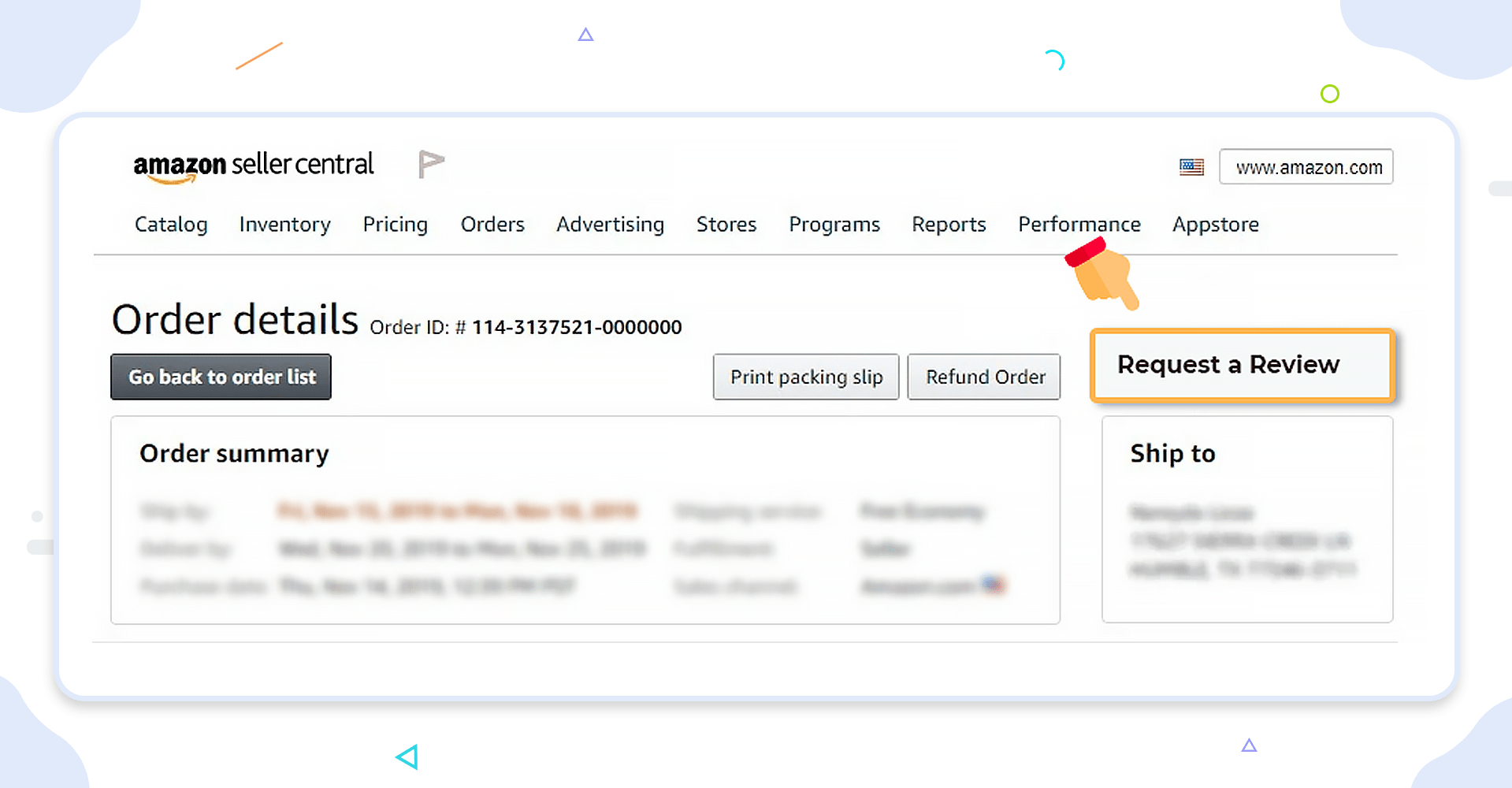
Amazon Buyer-Seller Messages: Everything You Need to Know
Do you communicate with Amazon buyers? Whether you’re sending review requests or asking for product customization information, it’s important to understand and follow Amazon’s policies. However, policies do change, and keeping up can be a challenge when you’re managing other aspects of your Amazon business.
You may be aware that Amazon recently announced updates to the Communication Guidelines which will go into effect on November 6, 2020. The updates were made in response to feedback from third-party sellers and software developers that the current policies related to communication with buyers were confusing.
In this article, we’ll discuss what you need to know about sending Amazon messages, how to communicate with buyers while remaining compliant with communication policies, and alternative ways to request reviews.
Table of contents
Protecting Buyer Trust
Why are there so many rules when it comes to communicating with Amazon buyers? In short: to preserve trust and provide protection for customers, sellers, and Amazon itself.
Let’s start with Amazon. It’s no secret that Amazon is one of the world’s most successful companies. What began as an online bookstore has morphed into a global company that continues to grow and experiment with additional services. When Amazon began allowing individuals to review products listed on Amazon (regardless of where they were purchased), it helped build consumer trust for the products as well as the company. Protecting that trust is imperative for Amazon’s continued success.
Customers love reviews, but they want to know that the reviews they see are authentic and relevant. After all, who wants to spend their hard-earned money on a defective product that had hundreds of fake five-star ratings?
Prior to October 2016, it was a common practice for many sellers to provide free products in exchange for an “honest” review on Amazon. However, investigative reports analyzed these reviews and discovered that customers who received free items were more likely to leave better reviews, regardless of the actual product quality.
Previous Policy Changes
In October 2016, Amazon updated policies to make it clear that offering free or discounted products in exchange for a review would not be allowed. Additional updates have made it very clear that Amazon will not tolerate review manipulation in any form. As the space has become more competitive, Amazon’s role in preserving the integrity of customer reviews has gotten increasingly challenging.
At the same time, the guidelines for communicating with Amazon buyers were confusing, particularly when they contradicted other policies. Some sellers found themselves restricted from sending Buyer-Seller Messages or facing suspension, in many cases without clearly understanding which policies they had violated.
When the Request a Review button was introduced in late 2019, it was a welcome option for sellers who wanted to ensure that their review requests were completely compliant with Amazon policies. In fact, in a random sampling of over 1200 FeedbackFive customers, we found that the positive review rate increased for sellers who implemented Request a Review automation.
The 2020 updates to the Communication Guidelines provide important clarifications for third-party sellers. Some policies were unclear or open to misinterpretation. The updates make it much easier to understand and comply with Amazon policies. Keep reading to find out what you need to know about the Amazon messages you can send as well as what not to do.
Amazon Messages Sellers Can Send
Amazon defines two types of direct communication with buyers: permitted messages and proactive permitted messages.
Permitted messages are for completing an order or responding to a customer service inquiry.
Proactive permitted messages are initiated by sellers and are not responses to a buyer’s question. Reasons for sending these messages include:
Requesting a product review or seller feedback
Sending an invoice
Scheduling delivery of a bulky or heavy item
Asking a question related to a return
Resolving an issue with order fulfillment
Verifying a custom design
Scheduling an Amazon Home Services appointment
Proactive permitted messages can also be sent for any reason where contact is necessary for the buyer to receive their purchase. The messages must be sent within 30 days of order completion and must include the 17-digit order ID. Messages should also be translated into the buyer’s language of preference.
Amazon Messages Sellers Should Not Send
Your goal as an Amazon seller should always be to provide a positive experience for buyers. Sending several follow up messages does the opposite, especially since Amazon already provides many details to buyers, such as order and shipping confirmations. Attempts to encourage positive ratings can be viewed as review manipulation, which can lead to account restriction or even suspension.
Put yourself in the buyer’s shoes and think about whether your message would provide value. A single polite, neutrally phrased request for a product review or seller feedback reminds buyers to share their thoughts on Amazon, which benefits other shoppers.
Customer reviews are an integral part of the purchase decision for many Amazon shoppers, so asking for a review makes sense. Sending repeated review requests that the recipient sees as spammy, on the other hand, creates a negative experience.
There are several types of messages that Amazon sellers should not send to buyers. These include:
Order or shipping confirmations
Emails that offer assistance if buyers have any issues
Marketing or promotional messaging
Emails that only say “Thank you”
Language that encourages positive reviews or seller feedback ratings
Requests to remove or update an existing product review
A repeat request per order for a review or feedback
Whenever you plan to send a message to Amazon buyers, take a moment to think about the purpose of your message. While a simple offer of assistance for buyers who experience issues with your products may seem like proactive customer service to you (therefore aligning with the goal of providing an exceptional experience for Amazon customers), it can also be seen as an attempt to divert a negative rating by getting the customer to contact you instead of immediately leaving a review.
If you regularly receive negative reviews or customer complaints regarding your products, it’s past time to look for ways to make improvements.
Amazon wants to protect the integrity of customer reviews. Keeping that in mind is a helpful lens when it comes to understanding the “why” behind many of Amazon’s policies related to communication with buyers.
What Not to Include in Amazon Messages
Permitted messages to buyers should not include:
Attachments, except for shipping labels, invoices, or custom design
External links, except for secure working links required to complete the order or links to Amazon
Logos that contain or display a link to your website
A link to opt-out of messaging
Sensitive content such as bare skin, violence/gore, or offensive language
Tracking pixels or images
Email addresses
Phone numbers, unless they are related to warranties, manufacturers, or shipping providers
Images of the products purchased
Emojis
GIFs
Images that are not related to your brand or company
When it comes to styling your messages, avoid overriding Amazon’s default line height, font family, or font color. Any images included should be related to your brand or company and must be secure https images. Message margins should not be over 20% max-width and the message body should not override default text alignment settings.
Avoid spelling errors and do not include more than two line breaks in a row. Fonts should not be in more than three sizes in your messages. Amazon messages should comply with the Web Content Accessibility Guidelines from the Web Accessibility Initiative.
How to Send Amazon Messages
There are a few different ways to send Amazon messages to buyers. In Seller Central, simply click on the buyer’s name on the Orders page or the Order Details page to send a message using one of Amazon’s templates. You can also use the Request a Review button on the Order Details page, which triggers a request from Amazon to the buyer on your behalf.
You can find third-party applications that allow you to create and schedule Amazon messages in the Amazon Appstore. Some, such as FeedbackFive, even allow you to schedule automation for Request a Review messages. Finally, you can use the Amazon Application Programmer Interface (API) to send messages.
Follow the Guidelines
Getting customer reviews can be challenging, which is why it's important to continue asking for them! But violating Amazon’s guidelines can result in the restriction, so you need to know how to request reviews the right way. Whether you use Buyer-Seller Messaging or Request a Review to send your Amazon messages, make sure you understand what can and cannot be included in any communication with buyers.
If you are concerned about potential policy violations or simply want a “set it and forget” way to request reviews from buyers, the Amazon Request a Review messaging system is a great option. Since the messages are created and sent by Amazon, you can rest assured that your messages will always be compliant with Amazon policies.
About the author:
Becky Trowbridge is the Content Strategist at eComEngine. Her mission is to empower Amazon sellers with the information they need to be successful in a competitive market. When she's not writing or managing content, she enjoys spending time outdoors, trying new recipes, and reading.







